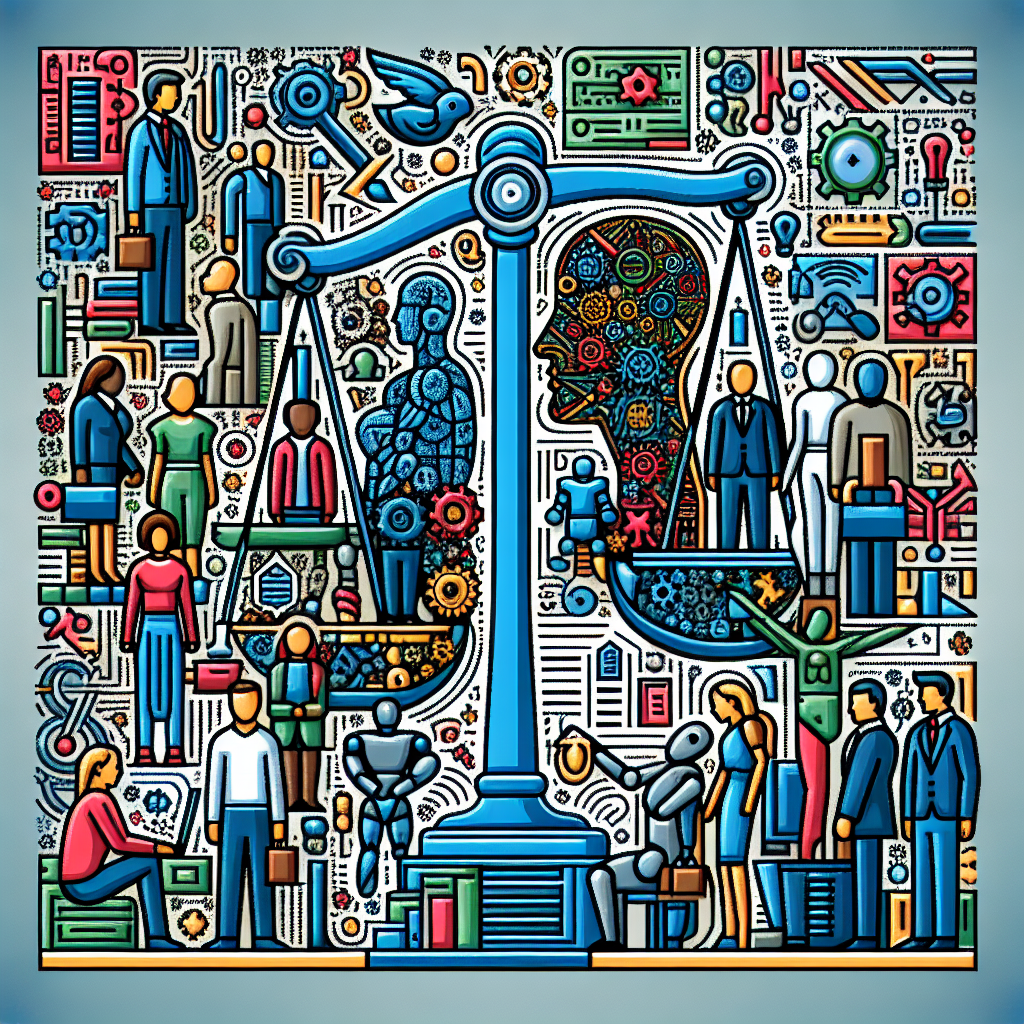Artificial Intelligence (AI) has the potential to revolutionize industries and improve various aspects of our lives. From healthcare to finance, AI is being used to make decisions, automate processes, and analyze data in ways that were previously impossible. However, as AI becomes more prevalent in our society, there is growing concern about the risks of bias and discrimination that can arise from AI systems.
AI bias occurs when the algorithms used in AI systems reflect and perpetuate existing societal biases and prejudices. This can lead to discriminatory outcomes that disproportionately affect certain groups of people. For example, in a study conducted by researchers at the University of Washington, it was found that an AI system used to predict healthcare costs for patients exhibited racial bias, with Black patients being assigned higher risk scores than White patients, even when controlling for other factors.
There are several reasons why AI systems can exhibit bias. One of the main reasons is that AI systems are trained on historical data, which may contain biases and prejudices that have been present in society for years. If this data is not properly cleaned and curated before being used to train AI models, these biases can be amplified and perpetuated in the AI system’s decision-making process.
Another reason for AI bias is the lack of diversity in the teams that develop and test AI systems. If the team working on an AI project is not diverse and does not include members from different backgrounds and perspectives, they may not be able to identify and address potential biases in the system.
The risks of AI bias and discrimination are not just theoretical – they have real-world consequences. In the case of healthcare, biased AI systems can lead to unequal access to care and treatment for marginalized communities. In the criminal justice system, biased AI algorithms used to predict recidivism rates can result in harsher sentencing for certain groups of people.
There have been several high-profile cases of AI bias and discrimination in recent years. In 2018, Amazon scrapped an AI recruiting tool that was found to be biased against women. The tool was trained on resumes submitted to the company over a 10-year period, which were predominantly from male applicants. As a result, the AI system learned to favor male candidates over female candidates, perpetuating gender bias in the hiring process.
In 2019, Apple came under fire for the gender bias in its credit card algorithm, which offered higher credit limits to men than to women with similar credit scores. The company claimed that the algorithm was designed to be gender-neutral, but it still exhibited bias due to the data used to train it.
To address the risks of AI bias and discrimination, there are several steps that can be taken. First, it is crucial for organizations developing AI systems to prioritize diversity and inclusion in their teams. By including members from different backgrounds and perspectives, organizations can better identify and mitigate potential biases in their AI systems.
Second, organizations should invest in robust data cleaning and curation processes to ensure that the data used to train AI models is free from biases and prejudices. This may involve auditing and testing AI systems for bias on a regular basis to ensure that they are fair and equitable.
Third, transparency and accountability are key in addressing AI bias. Organizations should be open and transparent about how their AI systems work and the data used to train them. They should also establish mechanisms for redress in case of discriminatory outcomes.
Finally, policymakers and regulators play a crucial role in addressing AI bias and discrimination. There is a need for regulations and standards that require organizations to address bias in their AI systems and ensure that they are fair and equitable.
In conclusion, the risks of AI bias and discrimination are real and have the potential to exacerbate inequalities in society. It is crucial for organizations, policymakers, and society as a whole to take proactive steps to address and mitigate these risks to ensure that AI systems are fair, transparent, and equitable for all.
FAQs:
Q: How can AI bias be identified and mitigated?
A: AI bias can be identified through auditing and testing AI systems for bias on a regular basis. Organizations can mitigate bias by prioritizing diversity in their teams, investing in data cleaning and curation processes, and establishing transparency and accountability mechanisms.
Q: What are the consequences of AI bias and discrimination?
A: The consequences of AI bias and discrimination can include unequal access to opportunities and services for marginalized communities, perpetuation of societal prejudices and inequalities, and erosion of trust in AI systems.
Q: What role do policymakers and regulators play in addressing AI bias?
A: Policymakers and regulators play a crucial role in addressing AI bias by establishing regulations and standards that require organizations to address bias in their AI systems and ensure that they are fair and equitable.

